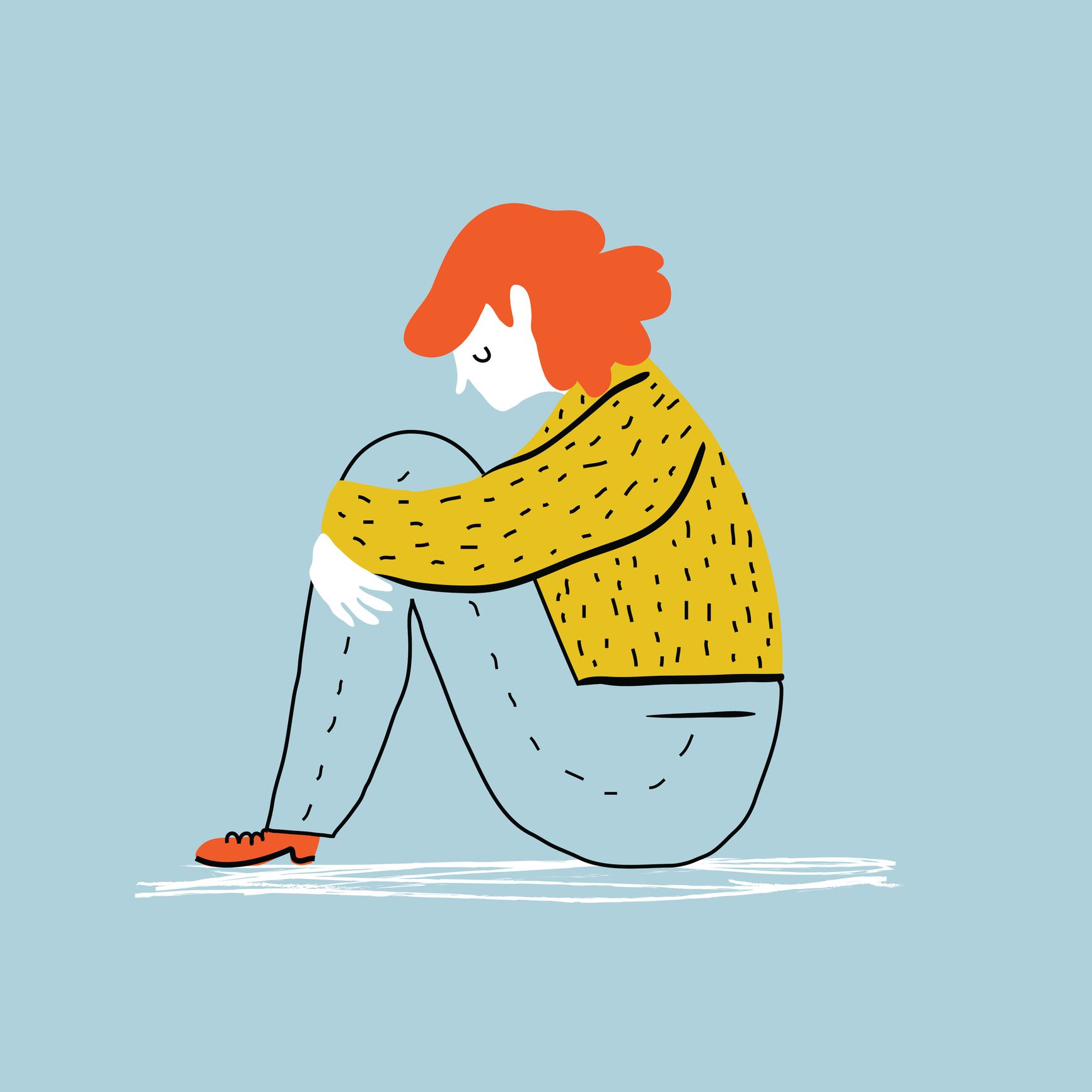Ketamine: the key to treatment resistant depression?
The treatment of depression can be a complex blend of art and science as the pathophysiology remains poorly understood. Here we explore Ketamine, a drug that has proven to have an important place in medicine and a possibly ground-breaking place in treatment of depression.

The treatment of depression can be a complex blend of art and science as its pathophysiology remains poorly understood. There is a wide spectrum of response to various medications and therapy. Some patients may have rapid relief of their symptoms, and others do not experience relief at all. This is a challenging issue that warrants more research.
Luckily, our tool box for the treatment of depression has grown to include several classes of antidepressants. The traditional monoamine oxidase inhibitors (MAOs), which include moclobemide, phenelzine, and isocarboxazid, are efficacious but are currently seldom used due to drug interactions, side effects, and the inconvenience of dietary restrictions that patients must adhere to while medicated. Tricyclic antidepressants are another early class, which includes doxepin, amitriptyline, nortriptyline and imipramine. These agents are efficacious not only in the treatment of depression, but may also be used to treat certain types of pain. This can include depression-associated chronic pain and diabetic neuropathy. Although effective, these medications are typically 2nd or 3rd line treatment options due to their drug interactions and marked side effects [1].
Newer antidepressants include the selective serotonin reuptake inhibitor (SSRI) family, and the Serotonin-Norepinephrine Reuptake Inhibitor (SNRI) family. Often considered first line due to their efficacy and tolerability, these SSRIs have made agents such as citalopram, sertraline and fluvoxamine a go-to option for healthcare practitioners and their patients.
In addition to pharmacotherapy, there is evidence that psychotherapy such as cognitive behavioural therapy (CBT) and exercise are effective options for the management of depression.
Despite the abundance of options, physicians and patients are often left puzzled after attempting numerous medications and approaches to no avail. This can be especially frustrating for patients with major depressive disorder (MDD), who often desire rapid and significant relief of their symptoms. MDD is particularly difficult to treat, and patients who suffer from MDD may spend years experimenting with several drugs from different classes. To make matters even more frustrating, many antidepressants have a delayed effect, requiring several weeks in order to determine their efficacy. It is no wonder that Ketamine, a drug that offers promise to patients who have been disappointed by conventional therapeutic options, has been sparking conversation among patients and healthcare providers alike.
Ketamine is an up and coming and indisputably controversial treatment for depression. Ketamine was synthesized by an American scientist named Calvin Stevens in 1962 and was primarily used as a veterinary anaesthetic. In humans, it has been used as an alternative anaesthetic for PCP because of the shorter duration of action and because it produces less hallucinogenic and psychotropic side effects. With its rapid onset of action, it may eliminate the need to wait for other antidepressants to take their effects [7]. Scientists have recently discovered that Ketamine's benefits may be due to its supportive capacity on glia, which are cells that support neurons (brain cells). This is contrary to the age-old belief that Ketamine works by blocking proteins known as NMDA receptors, found on neurons, which transmit signals between cells in the brain [5,6]. Prolonged antidepressant and pain-relieving effects can sometimes occur long after the drug is ingested, probably owing to Ketamine's ability to support brain cells [6].
To date, several studies, both placebo controlled and open labelled, have been conducted to evaluate the role of ketamine in treatment resistant depression and so far, results seem promising. For instance, in the study conducted by Berma and colleagues (2000) [3], 6 out of 9 enrolled participants experienced a clinical response using the Hamilton Depression Rating Scale (HAM-D).
Since this first study published in 2000, 11 controlled studies including 345 patients and conducted under similar circumstances have investigated the efficacy of ketamine in treatment resistant depression. Although the studies do not come without their limitations, it is important to note that the studies have shown consistent results. One of the most recent studies published this year has shown that mice who experienced several stressful events showed rapid bursting activity in lateral habenula, or the anti-reward center of the brain. This seemed to cause depressive symptoms. The depressed mice with frequent bursts in the lateral habenulae were motionless when given the chance to swim in a bowl of water. This can resemble the symptoms of people who have experienced stressful events and show symptoms of depression such as lack of sleep or changes in appetite. After being given ketamine, the mice who had previously shown bursting lateral habenulae, were found to quickly have less bursts in this brain area. Researchers then forced these lateral habenula neurons to fire in bursts, however, mice that had been given ketamine no longer showed depressive behavior [8]. This animal model study offers insight into the efficacy of ketamine in treating depression rapidly and effectively. The study may soon translate into the treatment of depression in humans.
It is estimated that roughly 30% of patients do not respond to currently available treatments; therefore, to say that this data is exciting would be an understatement. Ketamine treatment may offer depression patients rapid relief from symptoms without the lag time of several weeks or months required by conventional antidepressants.
Although ketamine has proven to earn an important place in medicine, and possibly ground-breaking place in treatment of depression, the fact remains that it is a drug of abuse and used as a psychedelic drug [2]. It is also impossible to revel in the benefits of ketamine, without also acknowledging that it harbours significant risk of abuse. Ketamine is a “dissociative anaesthetic”, and since the drug has made its debut, individuals have been exploring the drug recreationally. Ketamine has found its way into club scenes, has been recommended to the public in literature (Journeys into the Bright World by Marcia Moore [4]), and has even been suggested as a method of spiritual awakening and enlightenment. Schizophrenia-like effects have been observed in patients receiving Ketamine [7]. With the danger of causing potential symptoms of psychosis, it may be wise to approach its use with caution. However, for those in dire need of relief from depressive symptoms, who may have tried several medications and therapy to no avail, it may be worth the risk.
In addition, Ketamine can be inconvenient and expensive. It is normally given intravenously and must be administered repeatedly since its effects are not long-lasting for every individual [6]. It has been shown that while some people who take the drug have relief of symptoms for up to 180 days, others do not [6]. Another concern is the fact that there is little evidence surrounding the long-term, repeated use of ketamine. Although it is true that ketamine has been used as an anaesthetic for decades, individuals typically undergo anaesthesia on a single, isolated occasion. This occasion is usually a medical procedure or surgery. Very short term use of this medication limits the ability to confirm whether chronic use of this medication is safe.
There is a clear gap in care for those who suffer from major depressive disorder; therefore, not allowing a potentially life-changing drug to come to market solely because of abuse potential seems unreasonable. In Alberta, Canada, there exists a triplicate prescription program whereby the prescribing and use of certain medications (mostly narcotics) are tracked closely. This is an example of a method that allows patients to get what they need while helping to prevent abuse and diversion.
Although it is clear that there is much to be discovered about Ketamine, evidence so far is promising. With more clinical trials coming down the pipeline, stay tuned to find out if ketamine is the breakthrough drug for depression we’ve all been waiting for. This may be a promising treatment for individuals with treatment resistant depression.
Update: A nasal spray form of a component of ketamine was approved for use by the FDA on March 5, 2019 and is known as Spravato (esketamine). Ketamine is a mixture of two enantiomers (mirror image molecules). Esketamine is the s-enantiomer of ketamine. This is the first time that esketamine has been approved by the FDA for any use. This drug is indicated in conjunction with an oral antidepressant for treatment-resistant major depressive disorder (MDD) and can only be administered in a medical setting [9].
References/Links:
- Mental Health Canada (website, accessed Dec 2017)
- A History of Ketamine (website, accessed Dec 2017)
- Berman RM, Cappiello A, Anand A, Oren DA, Heninger GR, Charney DS, Krystal JH: Antidepressant effects of ketamine in depressed patients. Biol Psychiatry. 2000 Feb 15;47(4):351-4.
- Moore, Marcia, and Howard Sunny. Alltounian. Journeys into the bright world. Para Research, 1978.
- Reardon, Sandra. Party drug’s power to fight depression puzzles scientists. Nature News, May 2017
- Sleigh, Jamie et al. Ketamine – More mechanisms of action than just NMDA blockade. Trends in anesthesia and critical care. June 2014
- Trujillo, KA et al. The neurobehavioral pharmacology of ketamine: implications for drug abuse, addiction, and psychiatric disorders. 2011;52(3):366-78
- Yang, Yan et al. Ketamine blocks bursting in the lateral habenula to rapidly relieve depression. Nature volume 554, pages 317–322
- FDA news release: FDA approves new nasal spray medication for treatment-resistant depression; available only at a certified doctor’s office or clinic https://www.fda.gov/NewsEvents/Newsroom/PressAnnouncements/ucm632761.htm
